| |
| CLICK HERE FOR INDEX PAGE |
| |
| CHRISTOPHER COCKERELL - THE HOVERCRAFT |
| V. Ryan © 2002-2022 |
| |
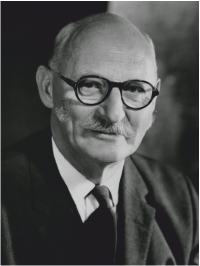 |
| |
| British inventor Christopher Cockerell carried out
experiments during the early 1950s with a device that later became known
as the hovercraft. The basic principle is that a vehicle can rest on a
cushion of air and propellers can provide forward motion. He built a
prototype in 1955 but the air force claimed it was a ship and the navy
claimed it was a plane. Eventually the British Government became
interested and classified it as top secret. |
| |
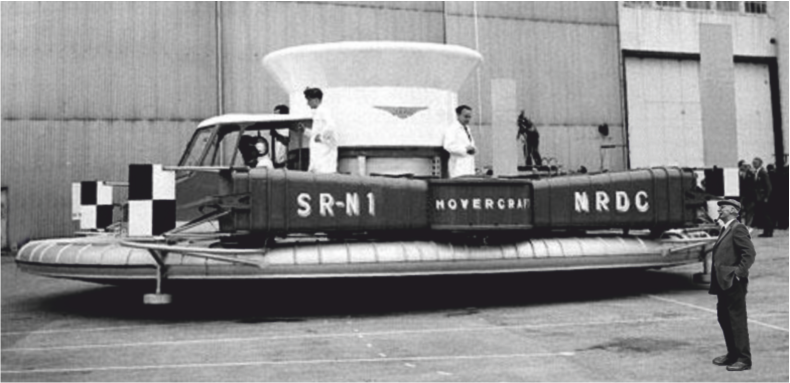 |
| |
|
|
| |
| The British Government provided funding and in 1959 a
prototype hovercraft was unveiled. A month later the prototype crossed
the English Channel which showed the technical durability of early
hovercrafts. Many people at the time referred to the hovercraft as like
a flying saucer. |
| |
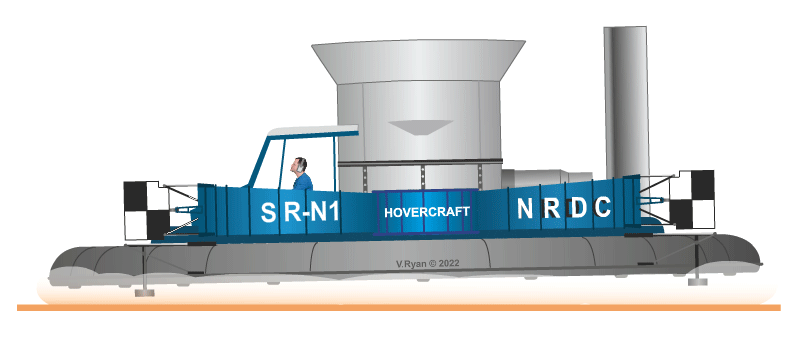 |
| |
| The basic operating principle can be seen in the
animation below. A propeller drives air down a hollow skin. The air inflates a
rubber skirt with some air escaping through holes to produce a cushion
of air underneath the hovercraft. The early prototypes did not have the
rubber skirt and this meant they were difficult to direct and they could
not get over obstacles greater than ten inches in height. The skirt
greatly improved this situation with obstacles no longer being a
problem. |
| |
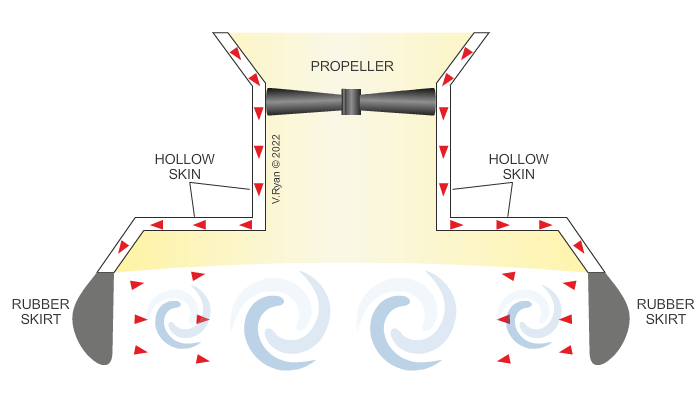 |
| |
|
|
| |
| The British military carried out extensive tests on
the final design. It was tested under all types of conditions including
crossing deserts, artic regions, rivers and seas. It proved to be
successful. |
| |
| |
| Early prototype testing - 1959 |
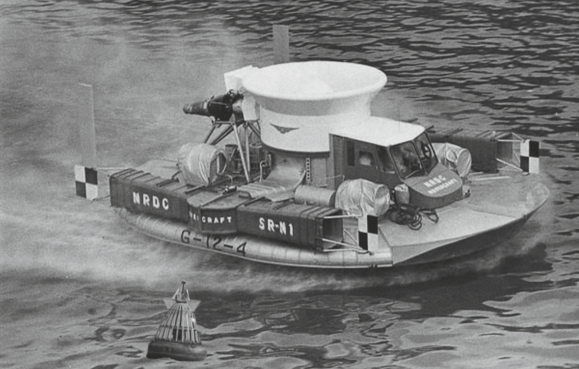 |
| |
| ARTIC TESTING - 1960s |
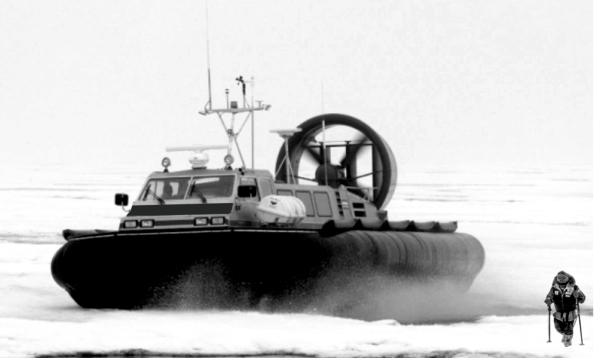 |
| |
| HOVERCRAFT - MILITARY VERSION - 1980s |
| |
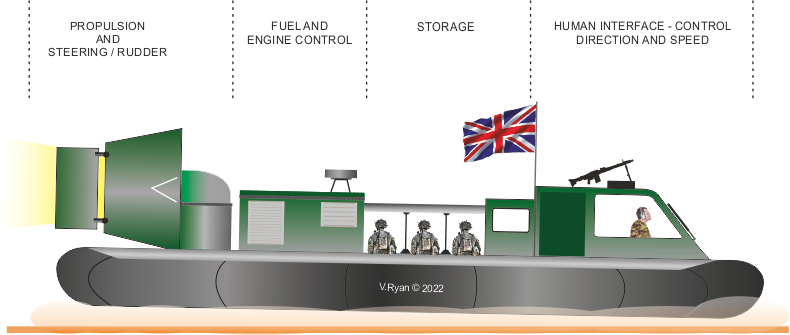 |
| |
|
|
| |
| THE PASSENGER SERVICE |
| |
The first passenger service began in 1962 between
the English seaside resort of Wallasey and South Wales. At 70 mph, the
40 mile crossing took approximately twenty minutes and compared the a
typical ferry of the time, the speed of the hovercraft was a vast
improvement.
The largest passenger hovercraft in the world was
used for the Dover to Calais crossing from the 1960s for nearly 40
years. The SRN4 was the largest passenger hovercraft in the world
capable of carrying over 380 passengers and 40 cars. It was 91 feet
wide and 185 feet in length and weighed 300 tons. The propellers were
20 feet in diameter and with its power it could cruise at 70 mph. It
was the fastest ferry in the world. |
| |
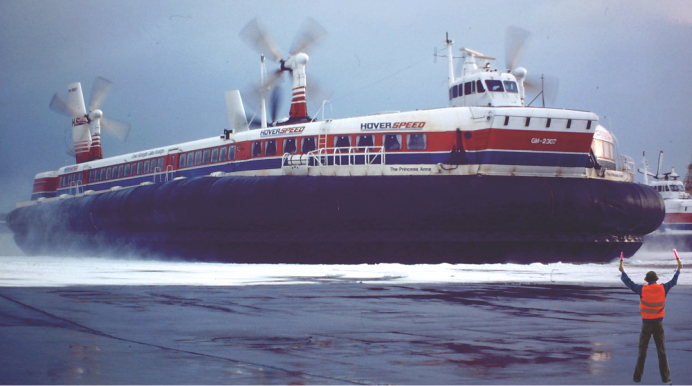 |
| |
| CLICK HERE FOR DESIGNERS INDEX PAGE |
| |
| CLICK HERE FOR CULTURES
INDEX PAGE |
| |
| |







